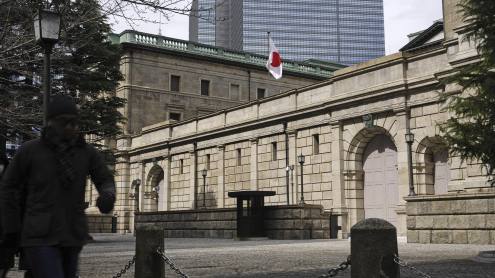The creation of a $200m Africa-focused private equity fund by Citi and UK government-owned investor CDC was widely taken as a sign of improving times for sub-Saharan economies. Bulge bracket investment banks – also including Goldman Sachs and JPMorgan – are looking again at Africa, as are a range of multilateral and bilateral institutions, seeking to promote public-private partnerships (PPPs) and other forms of investment.
This growing interest in Africa as an investment player in a number of different asset classes seems set to draw more delegates than usual to this year’s African Development Bank (AfDB) annual meeting – to be held in Shanghai from May 13-18 in recognition of China’s powerful new role in Africa. It will be only the second time that the meeting has been held outside Africa (Valencia was the first external host).
Shanghai represents a brave new world to which Africa can aspire. China is now the world’s second largest economy, and is taking an active interest in working with Africa – if not always in ways the continent’s traditional partners approve of.
Crucial time
The meetings will focus on many of the perennial themes occupying African policy-makers, such as infrastructure construction, regional integration, education and the elimination of poverty and disease. It will take place at what is “an extremely important time for Africa”, according to Donald Kaberuka, who took over from two-term AfDB president Omar Kabbaj in July 2005. Sub-Saharan Africa is experiencing encouraging economic growth of about 5.5% a year, with some countries registering growth above 10%.
“Africa is making progress and we would like to maintain the momentum and it is time to re-double our efforts in that area,” said Mr Kaberuka, speaking after the IMF/World Bank spring meetings.
Restored standing
He leads an institution whose financial standing has been restored after the near collapse of a decade ago, but whose operational credibility remains a work in progress. A working group convened by the Center for Global Development (CGD), an independent Washington think-tank, released a report last September with six recommendations to renew and reform Africa’s primary development bank.
There has been some progress. In 2004, the AfDB embarked on a decentralisation policy, with the aim of opening 25 new offices in Africa to bring the bank closer to Africans and better monitor programme implementation.
The AfDB registered record levels of operations in 2006, from loans, grants and debt relief. Overall activities reached $3.4bn, up 32% from 2005, and included an unprecedented $2bn from the bank’s concessional window for low-income countries. Of the $1.4bn-worth of non-concessional operations, the private sector window “more than doubled its lending to about $401m”, Mr Kaberuka reported.
Other successes included involvement in cancelling low-income country debt in accordance with the G8 Multilateral Debt Relief Initiative, and freeing up about $500m through the HIPC initiative.
Knowledge bank
The AfDB has promoted a growing focus on its role as a ‘knowledge facilitation bank’. At a stakeholders’ consultative workshop, held in Accra on April 12-13, 53 AfDB member countries adopted a development strategy for higher education, science and technology, aimed at establishing PPPs and private sector incentivisation programmes to develop technological skills, strengthen science and technology infrastructure, and promote institutional and policy reforms.
Zeinab El-Bakri, AfDB vice-president, told the meeting: “As a multilateral development bank, we are determined to transform our institution into a knowledge bank and build the capacity for an African voice.”
Stressing that a technology base was a prerequisite for sustained economic growth, she noted: “The east Asian experience is there for us to learn from.”
Prominent among the CGD recommendations was a strong focus on infrastructure, given Africa’s deficits in areas such as power, water and transport.
Like the biggest multilateral ‘knowledge facilitation bank’ – the World Bank – the AfDB understands its core clients still need to borrow.
Both institutions have started to move back into hydropower and other big ticket infrastructure financing. This has been highlighted by facilities such as the World Bank’s El Tebbin power plant loan in Egypt, and the AfDB’s decision to take a key role in one of Africa’s most long-awaited and urgently needed power projects: the Bujagali hydropower dam in Jinja, Uganda. The AfDB is set to approve a co-financing loan for Bujagali in May.
Elsewhere in east and southern Africa, the bank is committed to establishing a proposed power interconnection between Zambia, Tanzania and Kenya – seen as a major step forward in promoting regional integration – and to assist in financing the Kazungula bridge between Zambia and Botswana.
Africa suffers from a growing water scarcity that will prevent many countries from meeting their Millennium Development Goal targets for poverty alleviation, health, education and gender – but the continent uses only about 4% of its renewable freshwater resources. In the past four years, AfDB financing in the water supply and sanitation sector reached more than $330m annually. In 2007, the bank expects to increase this by 50%, both in terms of the number of countries supported and the volume of financing. The AfDB has created a dedicated Water and Sanitation Department, whose staffing will increase by 70% this year.
Chinese links
In the search for a role model to combat its poverty – and for fresh money to help its economic development – Africa has turned increasingly eastwards since 2004, when China’s president Hu Jintao announced a drive to strengthen relations with the continent.
The Shanghai meetings “will be an opportunity to draw some lessons from Asia’s experience in poverty reduction and to see how Africa can benefit from the new opportunities”, Mr Kaberuka said. “We cannot replicate entirely Asia’s impressive performance – each country is different – but there are lessons to share.”
A decade ago, China provided next to no aid to Africa, but it has since become the largest lender to the continent, mobilising several huge loans linked to commodity deals, and vowing to double its aid again at the late-2006 China-Africa summit. With bilateral trade jumping in 2006 by 40%, to reach $55.5bn, African nations are embracing China with open arms.
In Zambia, for example, Chinese firms are expected to invest $800m in a new economic development zone near a Chinese-operated copper mine by 2010, says finance minister Ng’andu Magande.
According to Mr Magande, Chinese investment is based on long-term mutual interests. “It’s not a military issue and it’s not a political issue – it’s a development issue,” he said in Washington on April 4.
Zambia has been a serious pioneer in attracting sub-Saharan mining investment, according to Ian Henderson, who runs the southern hemisphere office for Texel Finance in Johannesburg. “Several new players are undertaking studies and prospecting in the mining region spanning the Democratic Republic of Congo and Zambia, some using Zambia as a springboard, and others setting up operations in South Africa,” he says.
This is the sort of frontier business many poorer economies hope can underpin sustained growth.
Despite lingering doubts over its political stability, Nigeria shows what can be achieved – and is a prime lure for the growing amounts of overseas money now seeking African outlets. While oil markets were quaking from disturbances in the hydrocarbon-rich Niger Delta, Chinese oil producer CNOOC paid $2.3bn in 2006 for a stake in a Nigerian oil and gas field, its largest ever overseas acquisition.
Cutting corruption
Key for many banks looking to expand their international operations has been the role of the increasingly aggressive Economic and Financial Crimes Commission (EFCC), which has provided comfort to corporate responsibility departments previously daunted by Nigeria’s reputation for graft.
Other indicators include credit profile improvements – as petrodollars flow into the country’s coffers – falling inflation, lowered external debt and banking and trade policy reform. The growing tide of investment and lending has been encouraged by commitments such as the recent $155m International Finance Corporation (IFC) investment facility to support the majority privatisation of Eleme Petrochemical Company. Announced on February 21, the agreement represents the IFC’s largest sub-Saharan privatisation investment to date. It shows “the benefits that can accrue to a country that is committed to implementing reforms,” says Thierry Tanoh, the IFC’s director for sub-Saharan Africa.
A strong signal from the AfDB came in early 2007, in the form of its first naira-denominated bond, a N12.78bn ($100m) issue which carried a fixed coupon of 9.25%. This type of deal fits exactly with Mr Kaberuka’s desire to change the bank’s image so that it is recognised for its involvement in economic issues, rather than the political bun-fights that have characterised some of its past history.
And where the World Bank and AfDB go, commercial banks will, sooner or later, follow. A $350m Eurobond concluded in February 2007 for Nigeria’s Guaranty Trust Bank showed that a credible Lagos-based institution could now tap commercial money on an unsecured basis.











